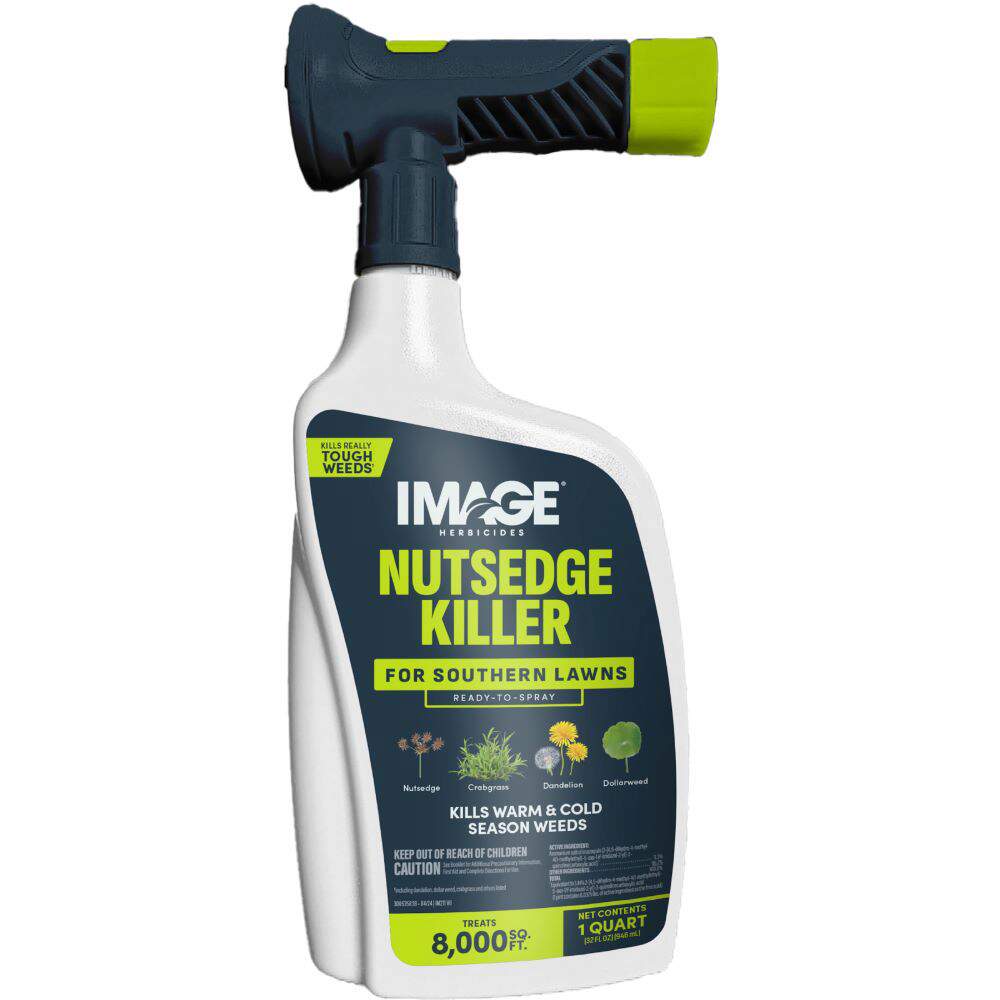HOW TO IDENTIFY PURPLE NUTSEDGE
Purple nutsedge is a tenacious perennial weed that stands out in several ways. Unlike most common weeds, this plant isn't a weedy grass or broadleaf weed — it's a sedge. Purple nutsedge has shiny, smooth, dark green leaves that grow in sets of threes from the base of the plant. Each leaf has a distinct midvein and "V" shape. Purple nutsedge leaves taper quickly to a sharp point. In contrast, yellow nutsedge leaves are lighter in color and taper gradually.
Purple nutsedge produces erect, unbranched stems that hold the flowering "spikelets." Unlike rounded grass stems, sedges have edges. Each stem has three sides that form a triangle when viewed in cross-section. Purple nutsedge stems typically grow up to 18 inches tall, but they can grow nearly twice that height.
Purple nutsedge flowers occur in clusters atop the stems on small flower stalks that grow from a central point. The flowering spikelets are reddish-purple to purple-brown, in contrast to yellow nutsedge's golden-yellow spikelets. This weed grows underground stems called rhizomes and tubers known as nutlets. Purple nutsedge grows chains of nutlets along its rhizomes, while yellow nutsedge rhizomes produce a single tuber.
WHERE AND WHY PURPLE NUTSEDGE GROWS
The heaviest concentrations of purple nutsedge occur in the southern United States and California. This plant's poor cold tolerance limits its ability to survive farther north. Like yellow nutsedge, it often invades areas where poor drainage or overirrigation causes lawn grasses to struggle. But once established, this weed tolerates heat and drought.
Purple nutsedge rarely produces viable seeds, but it spreads prolifically underground. Rhizomes generate new plants by forming shoots and plant-producing nutlets, which can persist in the ground for years. A single plant can produce thousands of nutlets and take over large patches of lawn in a single year.
HOW TO CONTROL PURPLE NUTSEDGE
Because purple nutsedge isn't a typical weed, many common weed killers can't control this sedge. When treating purple nutsedge, always read product labels carefully to ensure the product suits this tough weed and your lawn grass type. Some lawn grasses are sensitive to certain herbicides, so always double-check labels before applying.
Image Herbicide offers several highly effective liquid products to kill, control and suppress purple nutsedge:
- Image Kills Nutsedge Ready-to-Spray is a selective, post-emergent herbicide that kills purple nutsedge and other listed tough weeds in southern lawns. Just attach the container to your garden hose; the product does the measuring and mixing for you as you spray.
- Image Kills Nutsedge Concentrate, designed for use with a pump-style sprayer, selectively kills purple nutsedge and other listed summer and winter weeds in southern lawns. This product is ideal for spot treating or treating large lawn areas.
- Image All-in-One Lawn Weed Killer, available as Ready-to-Spray and Concentrate products, is a selective weed killer that starts working on contact to control or suppress purple nutsedge. For best results with purple nutsedge, repeat application every three to four weeks.+ This product suits most cool-season and warm-season lawn grasses, but avoid using it on St. Augustinegrass.
Purple Nutsedge Control Tips: Purple nutsedge forms an extensive underground network, with tubers up to 18 inches deep. The tubers can survive for years underground, then suddenly reappear. So be on the lookout for new invasions, and treat promptly.
If you're looking for a granular option for post-emergent weed control, Pennington UltraGreen Southern Weed & Feed 34-0-4 suppresses purple nutsedge and feeds your lawn.
+Not for use on purple nutsedge in California
Always read product labels thoroughly and follow instructions, including guidelines for lawn grass types, frequency of applications and seasonal maximums that may apply.
PURPLE NUTSEDGE GALLERY

Purple Nutsedge

Purple Nutsedge Patch

Purple Nutsedge Leaf Tip

Purple Nutsedge Plant




